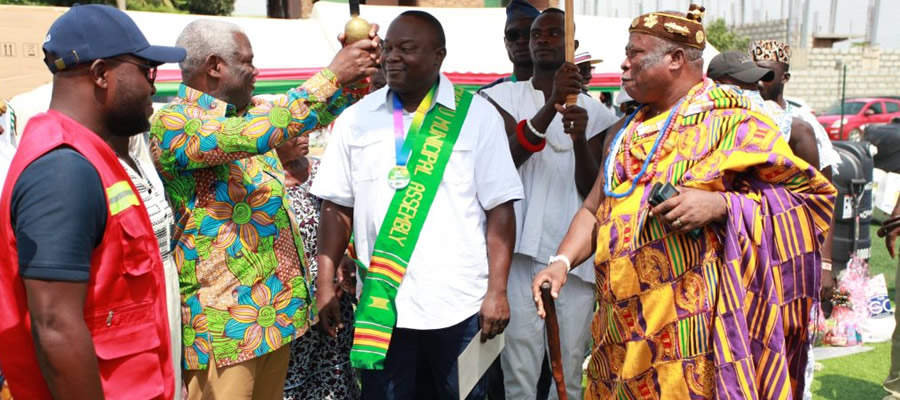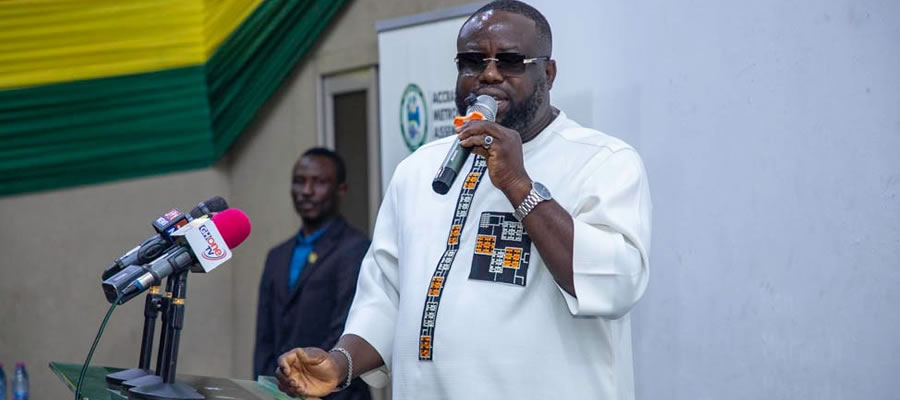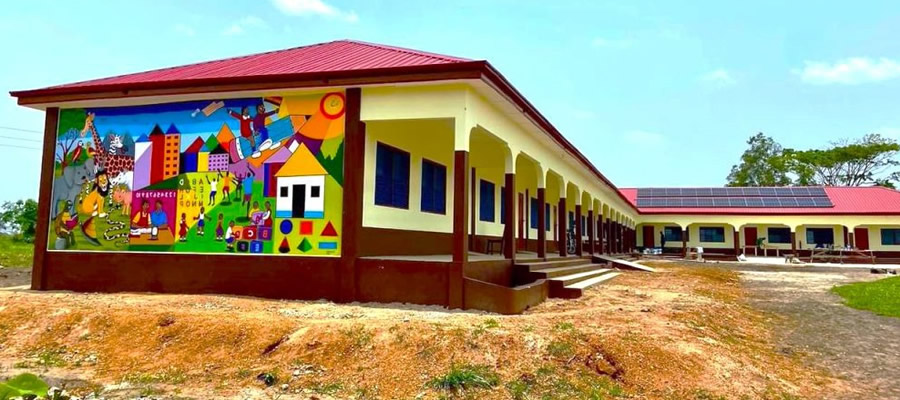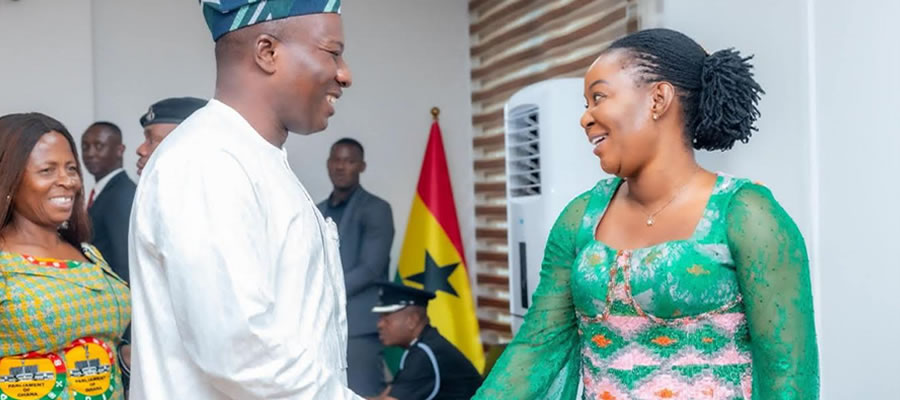
Ethnicity
Ethnicity refers to the ethnic group a person belongs to. Data on ethnicity in the 2010 census were collected only from Ghanaians by birth and Ghanaians with dual nationality. The classification is of major ethnic groups as officially established by the Bureau of Ghana Languages and has been in use since the 1960 census. Table 3.8 shows that Akan was the largest ethnic group in Greater Accra in 2010 with almost four out of ten persons (39.7%) stating they were Akan. This is followed by Ga-Dangme (27.4%), Ewe (20.1%), Mole-Dagbani (5.2%), Guan (1.9%), Gurma (1.6%), Grusi (1.3%) and Mande (0.7%).
The highest proportion of the population in Ga West (57.2%), Ga South (50.0%), Ga East (48.1%), Tema (42.7%), Accra (39.3%) and Adenta (39.1%) is Akan. In contrast, the highest proportion of the populations in Dangme East (84.5%), Dangme West (72.7%) and Ledzokuku/Krowor (43.5%) is Ga-Dangme and the highest proportion of the population in Ashaiman (35.0%) is Ewe.
Religion
The majority (83.3%) of the population in Greater Accra in 2010 reported an affiliation with Christianity (Pentecostal/Charismatic, 44.6%; Protestant, 22.3%; other Christian, 8.9%, and Catholic, 7.5%). The high proportion of Pentecostal/Charismatic (44.6%), in the region is probably due to the proliferation of these churches in Accra. Christians are followed by Muslims (11.8%) and traditionalists (0.5%). However, 3.4% of the population indicated they had no affiliation to any religion.
The highest proportion of Pentecostal/Charismatic (56.3%) is found in Dangme East, Protestants (25.2%) in Ledzokuku/Krowor, Muslims (16.6%) in Ashaiman, other Christians (11.8%) in Ledzokuku/Krowor, Catholics (9.4%) in Adenta and traditionalists (2.1%) in Dangme West. The highest proportion of the population with no religious affiliation (6.1%) is found in Dangme East.
Social Structure
The Ga-Dangme are a patriarchal, patrilineal and patrilocal society. The largest ethnic group in the region is the Akan, comprising 39.8 percent, followed by Ga-Dangme (29.7%) and Ewe (18%). In terms of individual ethnic sub groups, detailed results indicate that the Gas form the single largest sub-group, accounting for 18.9 per cent of the population. Among the Akan group, the Fantes constitute 10.6 percent, Asantes, 8.3 per cent and Akuapem 4.9 percent.
Festivals
Perhaps the most important common religious institution that has survived as an expression of the unity of the Ga-Dangme people relates to the three main annual festivals celebrated in the region. These are the Asafotufiam celebrated in the Ada area, Ngmayem in the Shai Osudoku area and the Homowo by the Gas.
The festivals provide an occasion for the gathering together of the Ga-Dangme from every part of the country, where they happen to be temporarily domiciled in order to eat communally together and at the same time to welcome new members of the family while remembering the dead. It is also an occasion for the settling of personal quarrels and important family disputes.
Marital status
Almost two-fifths (39.1%) of the population in Greater Accra are married and almost half (46.3%) have never been married. This is a characteristic of migrant receiving areas, since migrants are generally the young and unmarried. It also reflects the age structure of the region. While 5.6 percent are in an informal union, 3.7 percent, 2.9 percent and 2.3 percent are widowed, divorced or separated, respectively.
In Greater Accra, similar proportions of males and females are married. However, males are more likely than females to be never married (50.8% and 42.2% respectively). This compares to the national figure of 48.9 percent for never married males and 35.6 percent for never married females. This may confirm the region?s status as a destination for migrants. Females are, however, more likely to be divorced and separated than males and also to be in informal unions. In addition, the proportion of widows is six times higher than widowers (6.1% compared with 1.1%).
The marital status pattern evident at the regional level is generally reflected at the district level. In all districts apart from Ga South and Dangme East, the most common marital status is never married. The proportion of married people is highest in Ga South and Dangme East while Accra has the lowest proportion (36.5%). Among all Greater Accra districts, Accra and Ashaiman have the highest proportion of never married (48.2% and 48.1% respectively).
Dangme West has the highest proportion of persons in an informal union (9.0%). The highest proportion of persons divorced (3.1%) is found in Ashaiman and the highest proportion of widowed in Dangme East (6.7%).The proportion of the Greater Accra population married increases with each age group from age 15-19 years to 40-44 years, after which it declines and is offset by an increase in the proportion widowed. More than seven in ten people aged 40-44 years are married.
It should be noted that 6.1 percent of those aged 12-14 years and 5.5 percent of those aged 15-19 years are married, with an additional 0.8 percent and 1.6 percent respectively in informal/consensual unions. The law disallows persons below the marriage age of 18 years to marry since they are considered minors. These may be children who have been forced into marriage since some cultural practices in the country permit the betrothal and marriage of minors. In addition, some of these young girls are withdrawn from school to be married. The proportion separated and widowed is higher among the older ages and also increases with age.
Education has been argued to be a major determinant of delayed marriages. As people, especially females spend more time in school; the chances are that they will postpone their marriages. The proportion married are lowest at the lower levels of education. Finally, as the level of education increases, the proportion of persons in informal unions decreases.Those who define themselves as traditionalists are more likely to be married than other religious affiliations
Those with no religious affiliation are more likely to be in informal unions (12.3%) and to be separated (4.0%), while traditionalists also have the highest proportion divorced (4.7%). The lowest proportion of persons in informal unions(3.9%) is found among Muslims. Majority of the population of Greater Accra aged 12 years and older who are employed are married (51.4%) with an additional 7.4 percent in informal/consensual unions. The majority of people who are unemployed or economically not active people are never married (57.2% and 71.1% respectively).
Date Created : 11/29/2017 3:25:28 AM












 facebook
facebook
 twitter
twitter
 Youtube
Youtube
 +233 593 831 280
+233 593 831 280 0800 430 430
0800 430 430 GPS: GE-231-4383
GPS: GE-231-4383 info@ghanadistricts.com
info@ghanadistricts.com Box GP1044, Accra, Ghana
Box GP1044, Accra, Ghana